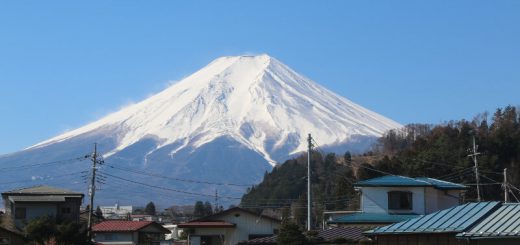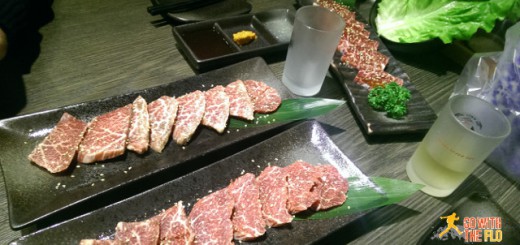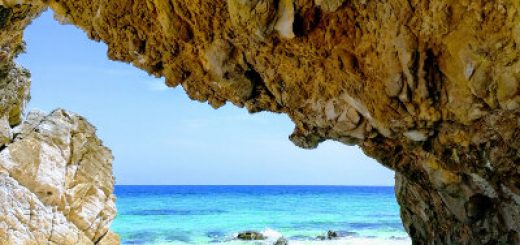Bukhara: onwards on the Silk Road
After a very pleasant stay in Khiva, my next stop would be (as is the case with 90% of travelers in Khiva) Bukhara, one of the main cities of the Silk Road and a historical center of commerce and religion.
The drive would be a long one and my hostel managed to match me with another single traveler headed in the same direction. With yet another passenger on board and the driver, we hit the road that would take us approx. 460km to Bukhara.
The road would change between a newly paved four lane highway and a pot-hole riddled two lane street. On smooth sections our driver would go an easy and comfortable 80-100km/h. On all other sections, he would drive like crazy with 120km/h. We later found out that the police only does radar speed control on the new sections… Would could also tell whenever a police checkpoint was coming up because the driver would put on his seat belt – and take it off again once we passed the checkpoint.
For lunch we stopped at a “restaurant” in the middle of nowhere. All they had was fish, which I thought was great since we were just along the Amu river. Well, once they showed us the fish in the freezer, I nope’ed out. The traveling companions went ahead and I didn’t regret it as the fish was just chopped and then plop, plop thrown into the deep frier. On a positive note, I saw the other traveler again in Bukhara and he seemed fine.
We made it to Bukhara mid-afternoon and I checked into a great AirBnB with a very nice host. First item on the agenda was getting a haircut and thanks to his translation, it turned our fairly acceptable. For dinner my host suggested Chor Bakhr restaurant, a few kilometers outside of town. Great food at very reasonable prices.
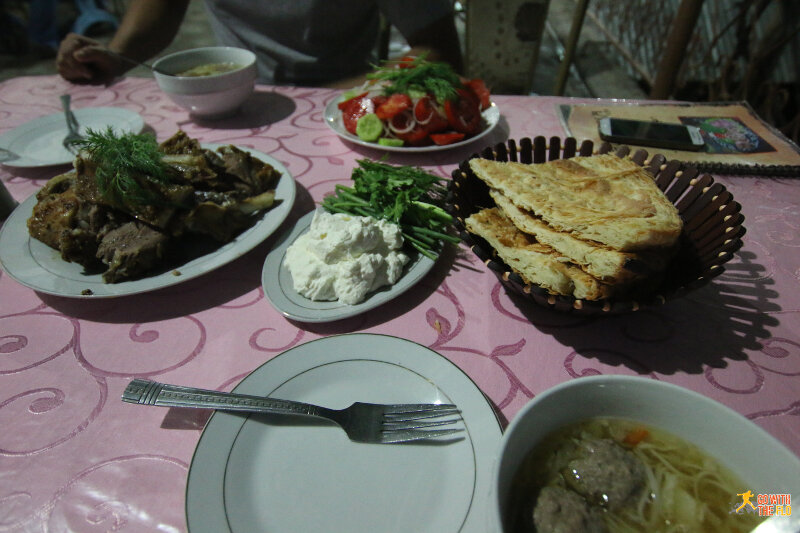
Dinner at Chor Bakhr
The next day, sightseeing would finally start and let me tell you, there is a lot to see in this city. Below are some impressions. I won’t go into the history of any of the attractions but I highly recommend reading the Wikipedia article on the history of Bukhara.
Scenes in the old part of town:
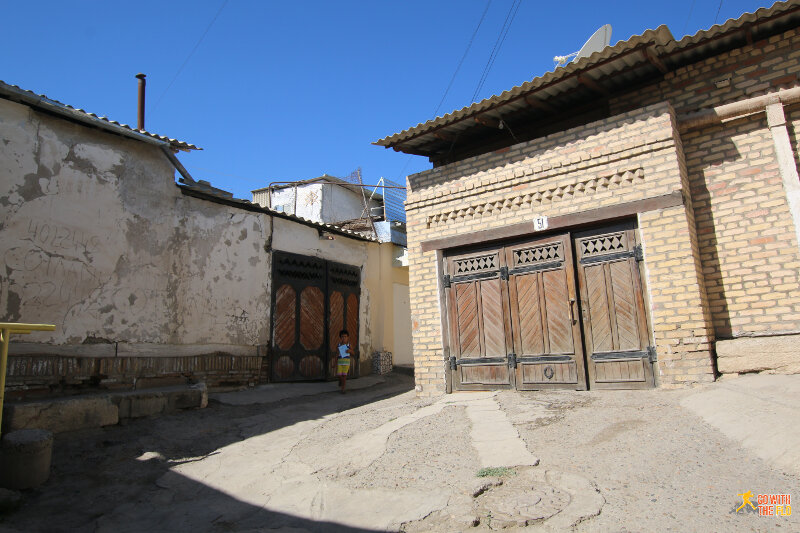
Old town Bukhara
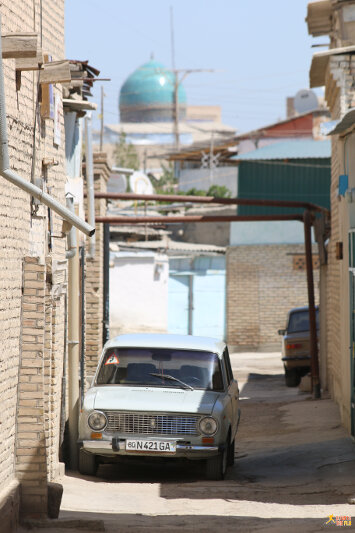
Old town Bukhara
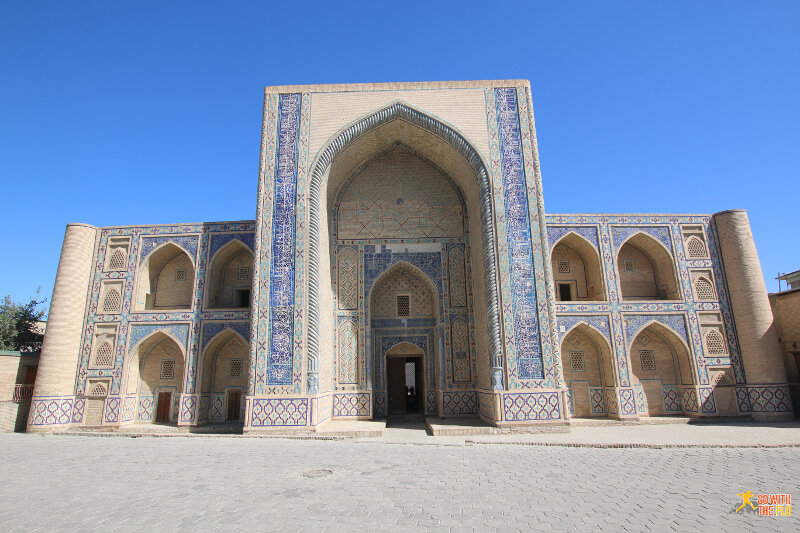
Ulugbek Medressa
And just opposite, the Abdul Aziz Khan Medressa:
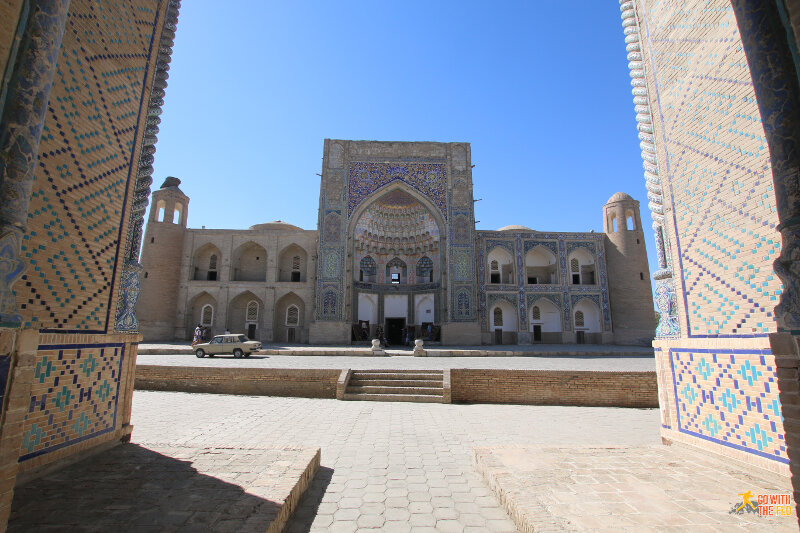
Abdul Aziz Khan Medressa
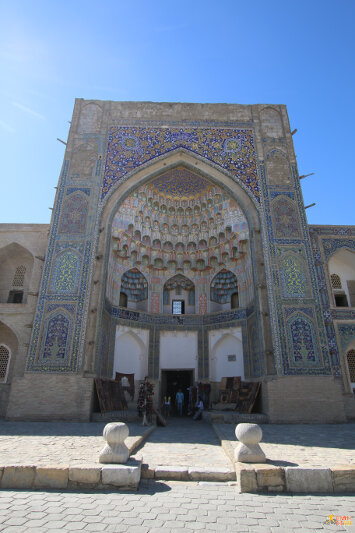
Abdul Aziz Khan Medressa
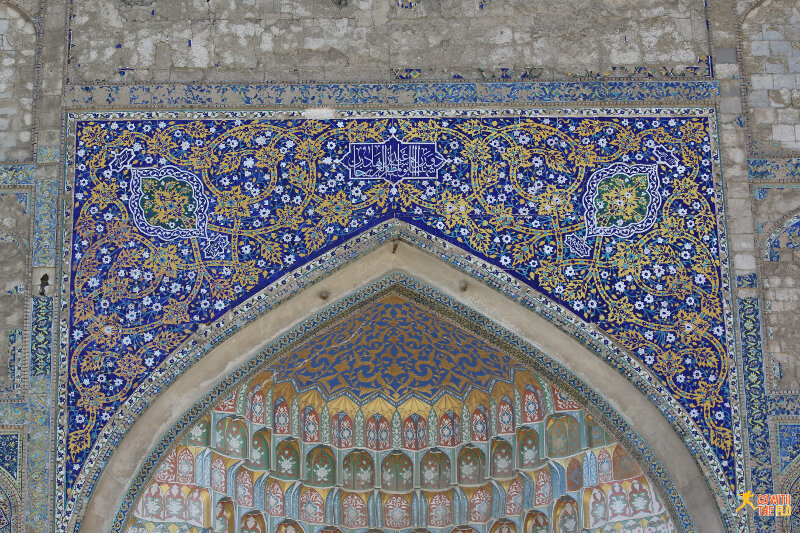
Abdul Aziz Khan Medressa
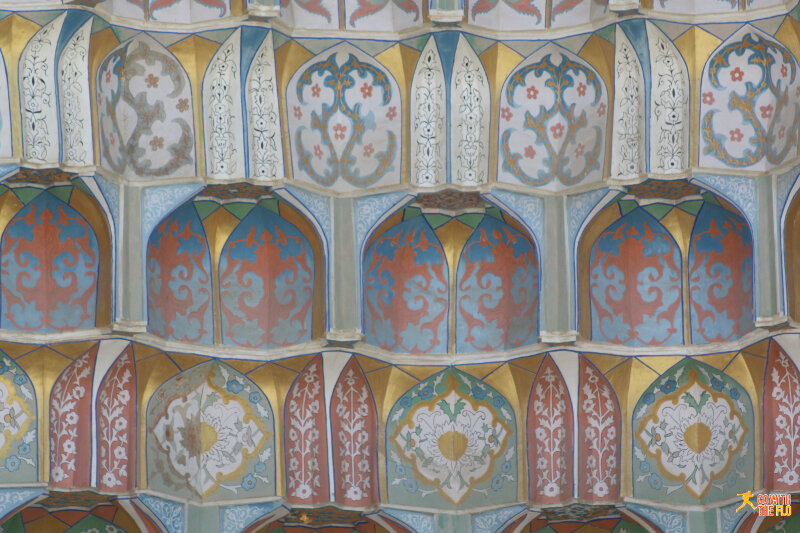
Abdul Aziz Khan Medressa
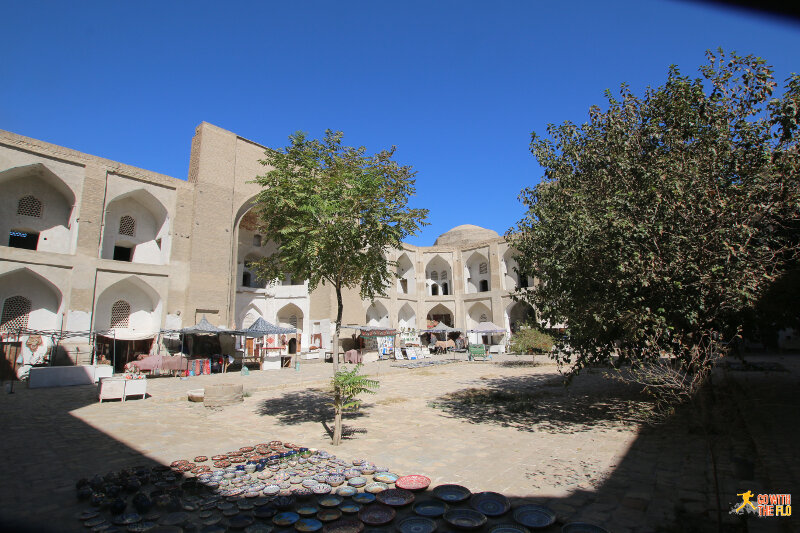
Inside the Abdul Aziz Khan Medressa
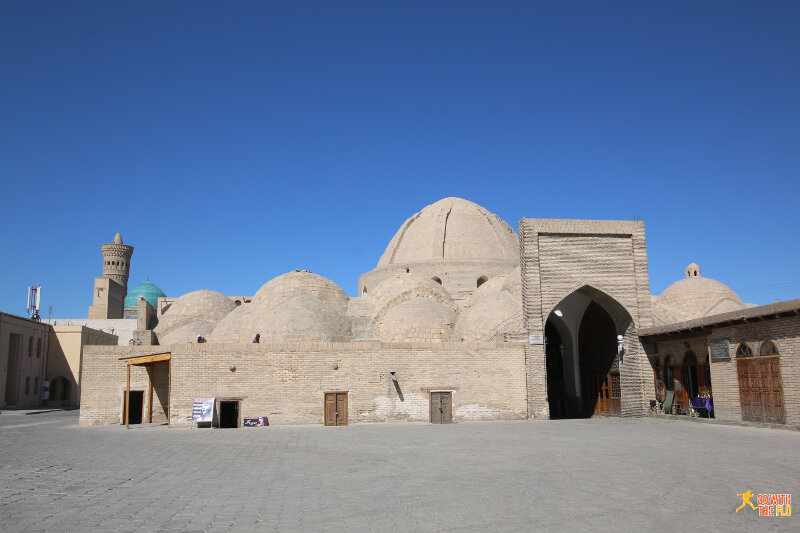
Taki-Zargaron Bazaar
What follows, was the highlight for me in Bukhara: the Kalon Mosque and Minaret.
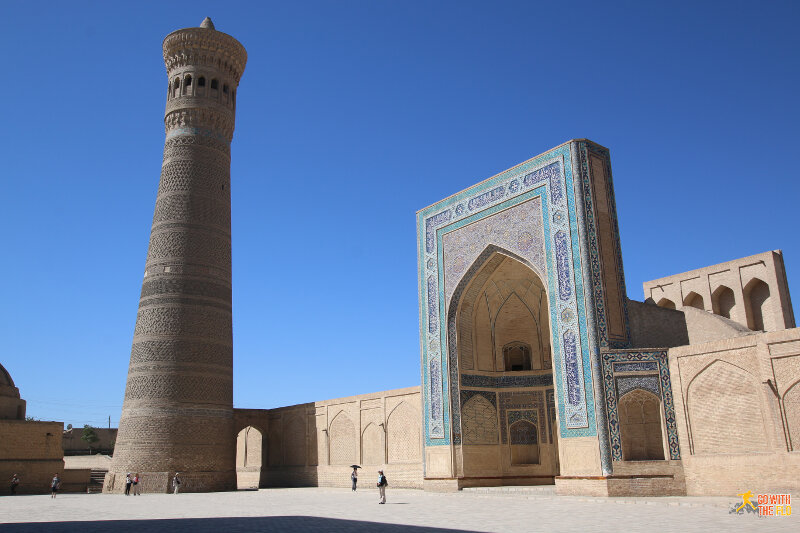
Kalon Mosque and Minaret
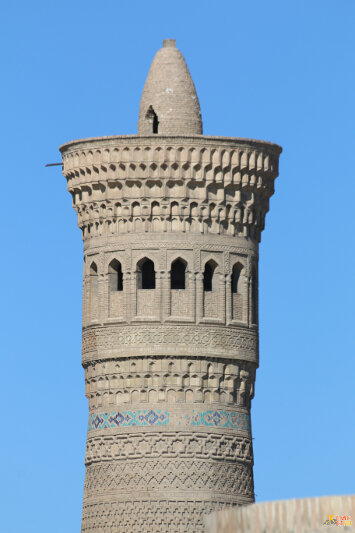
Kalon Minaret
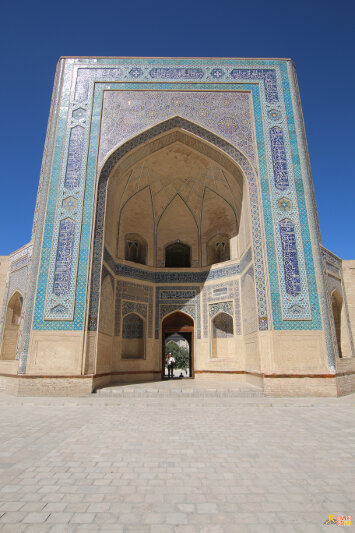
Kalon Mosque entrance
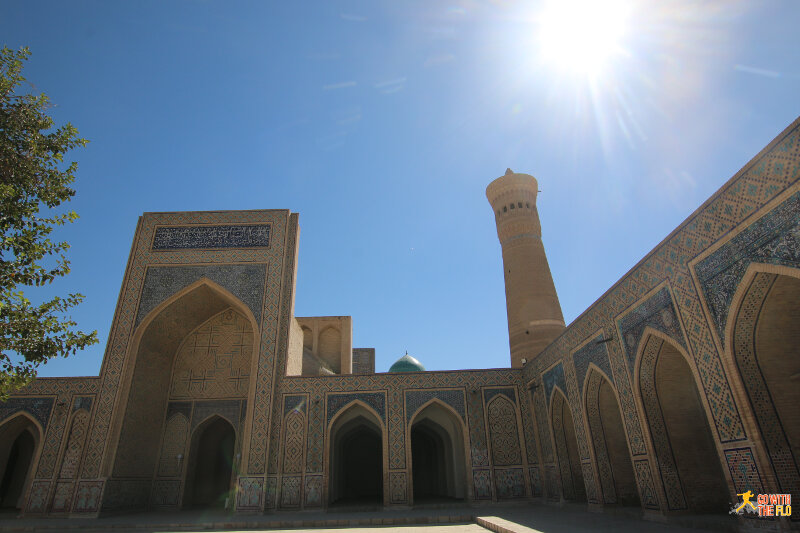
Inside the Kalon Mosque
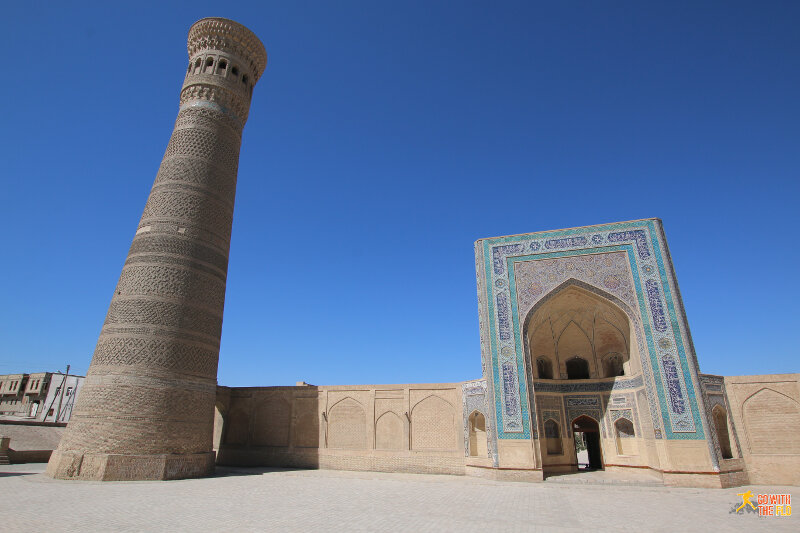
And another one because it is so beautiful
Right opposite is another highlight, the Mir-i-Arab Medressa which is still in use today:
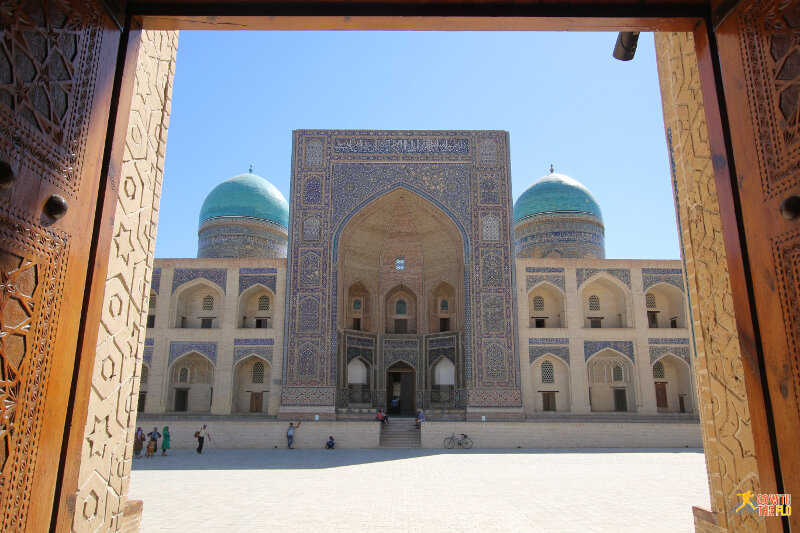
Mir-i-Arab Medressa seen through the doors of the Kalon Mosque
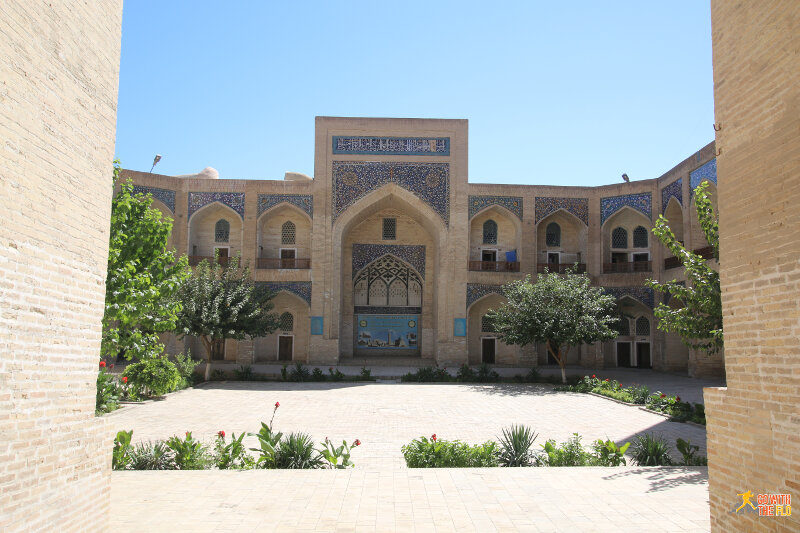
Courtyard of the Mir-i-Arab Medressa
From there, I walked the short distance to the Ark, the former compound or “city-within-a-city” where the ruler lived.
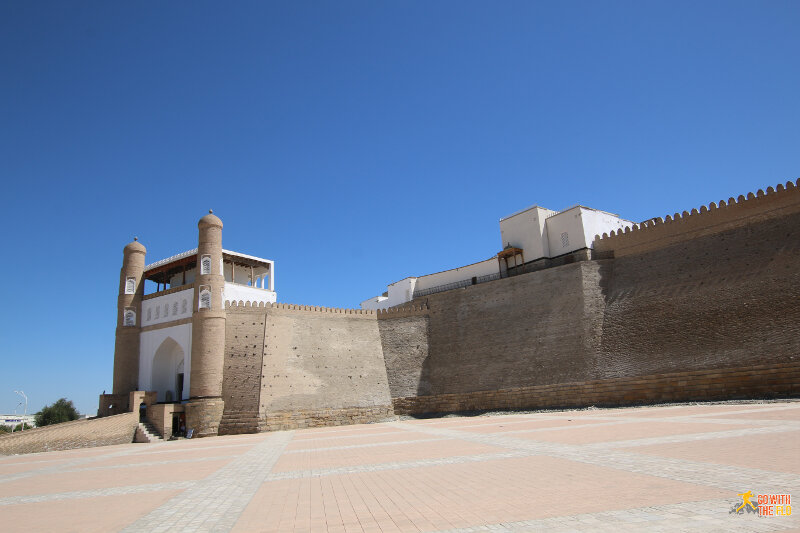
Ark entrance
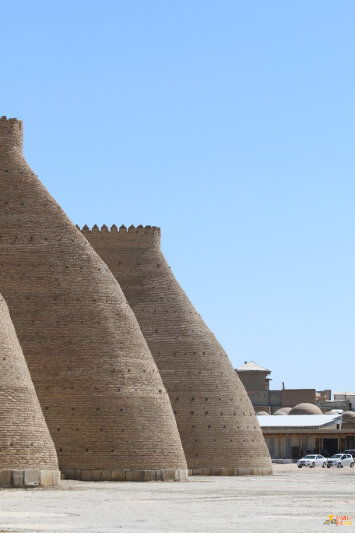
Ark walls
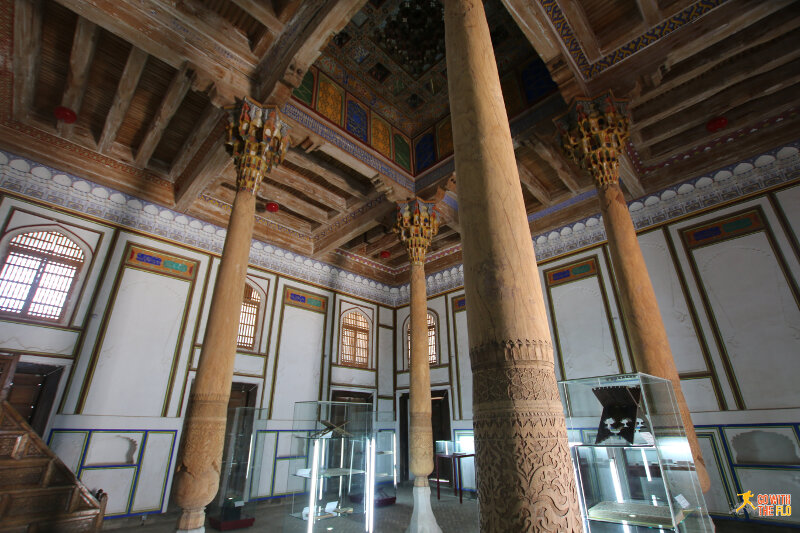
The Juma Mosque inside the Ark
Across the street is the Bolo-Hauz Mosque, the former emir’s mosque.
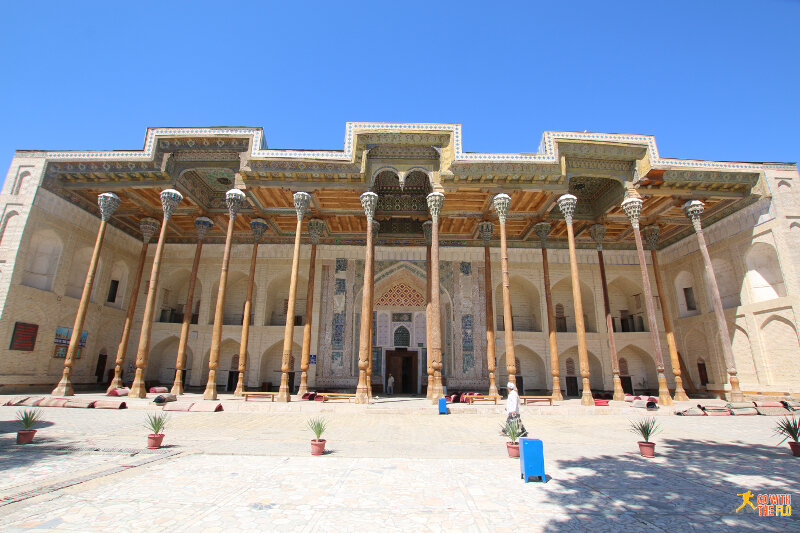
Bolo-Hauz Mosque
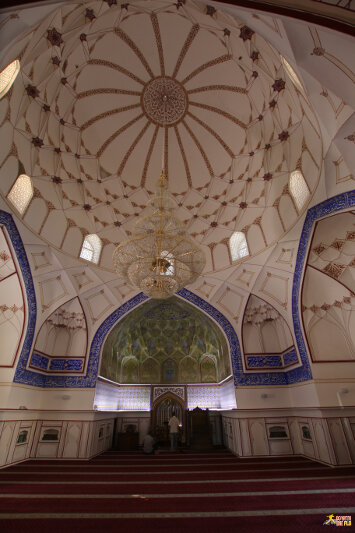
Inside the Bolo-Hauz Mosque
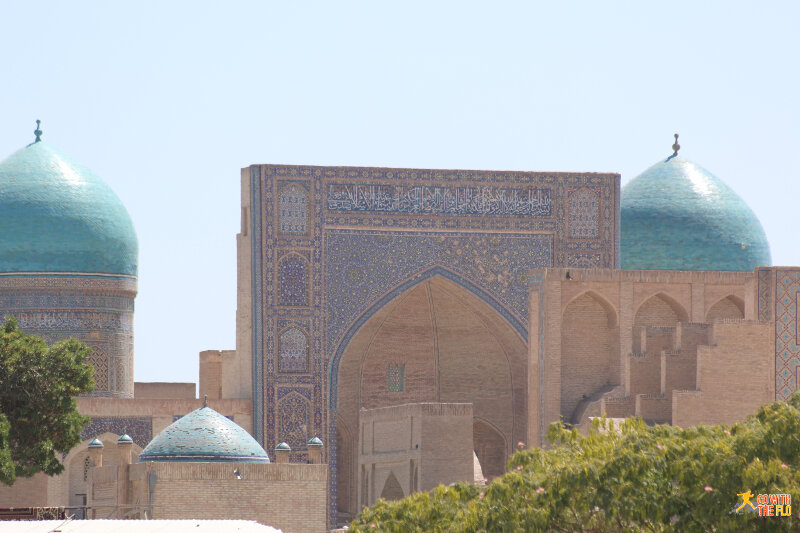
View back towards Mir-i-Arab Medressa
All of the main attractions are beautifully restored. Once you venture a bit off the main tourist path, you can also encounter some medressas that haven’t been fully restored:
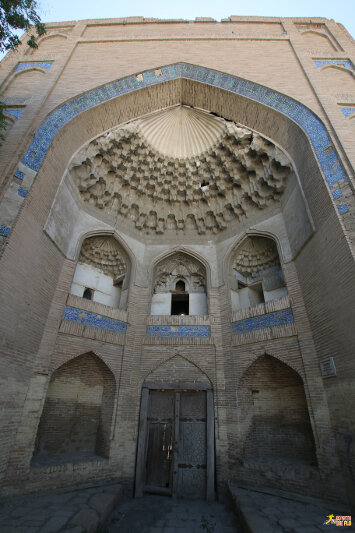
Goziyon Medressa
Back to the tourist path:
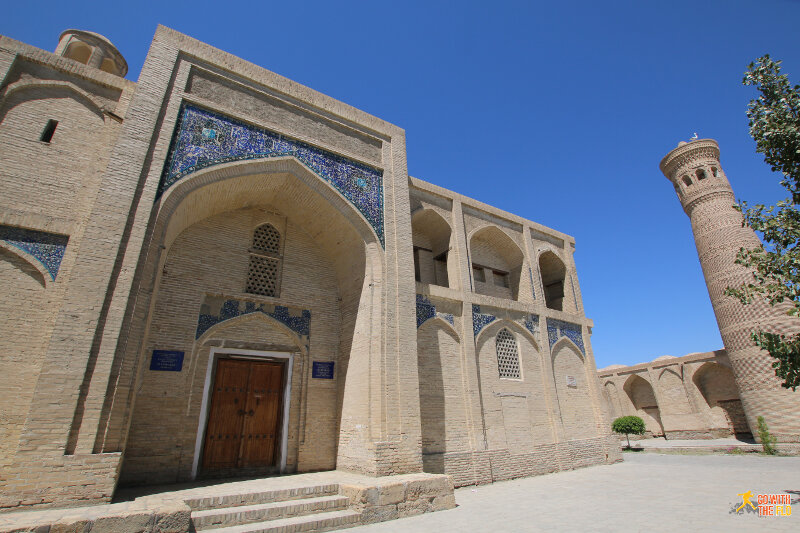
Gaukushon Medressa with the minaret of the Xoja Kalon in the background
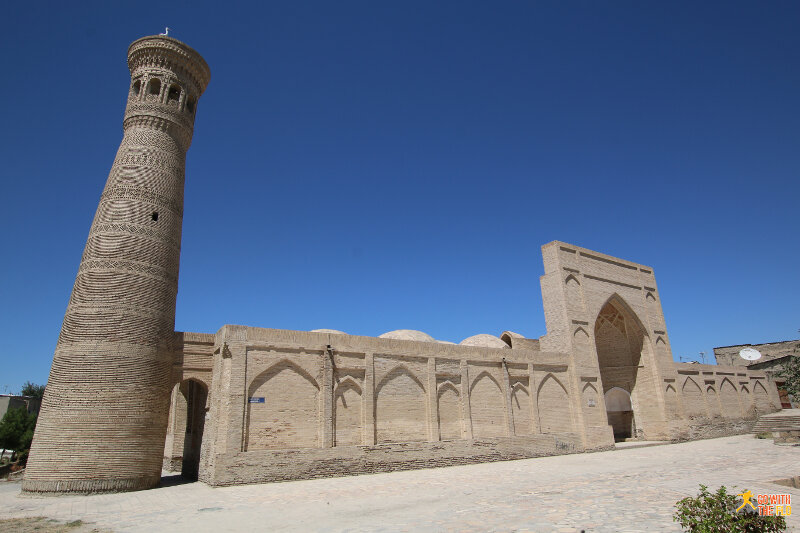
Xoja Kalon Mosque
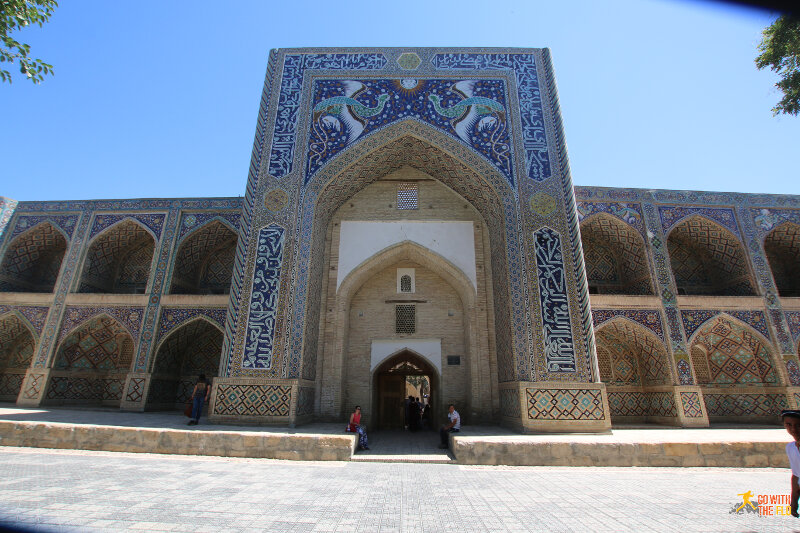
Nodir Devon Begi
Some readers might be thinking that they’ve seen buildings of one religion and would appreciate some variety. I hear ‘ya. Bukhara has an Jewish community going back several hundred centuries. The size of the community has declined over the years and now only about 220 Jews are left in Bukhara. Below is a photo of one of the synagogues:

Synagogue in Bukhara
Which has seen some prominent visitors in the past:
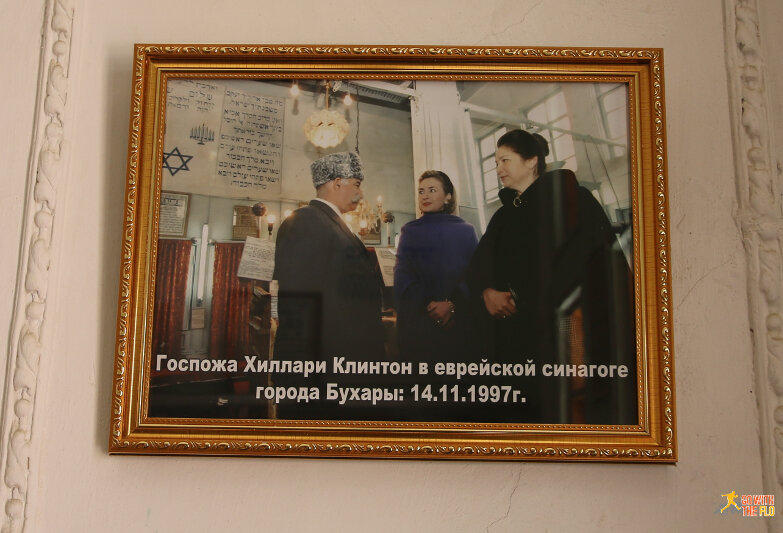
Synagogue in Bukhara
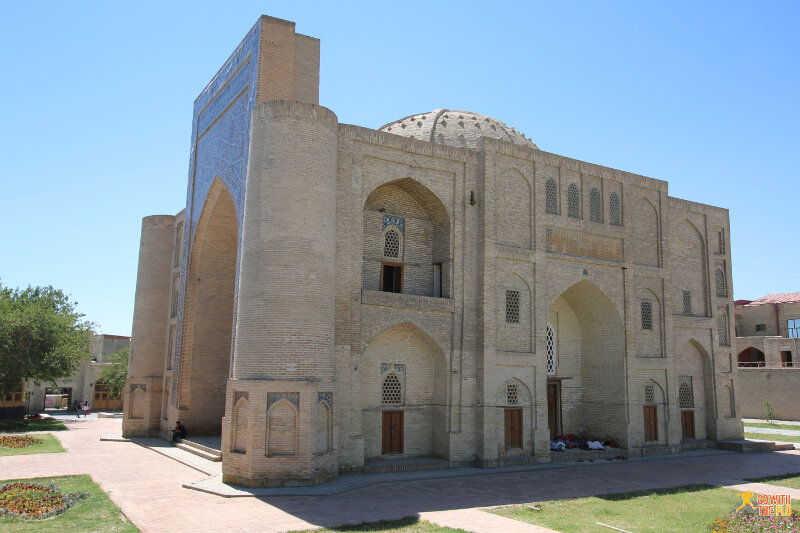
Nadir Devon Begi Khanaka
Another highlight: the Char Minar.
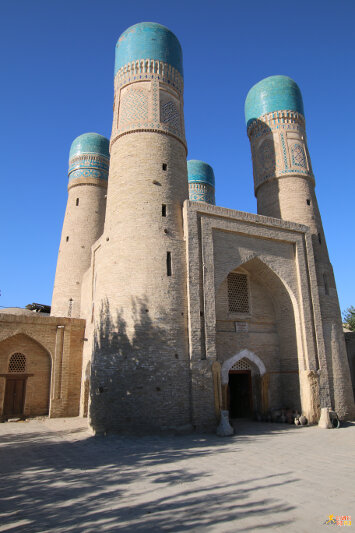
Char Minar
I then used the rest of the afternoon the explore the farmer’s market (Kryty Rynok).
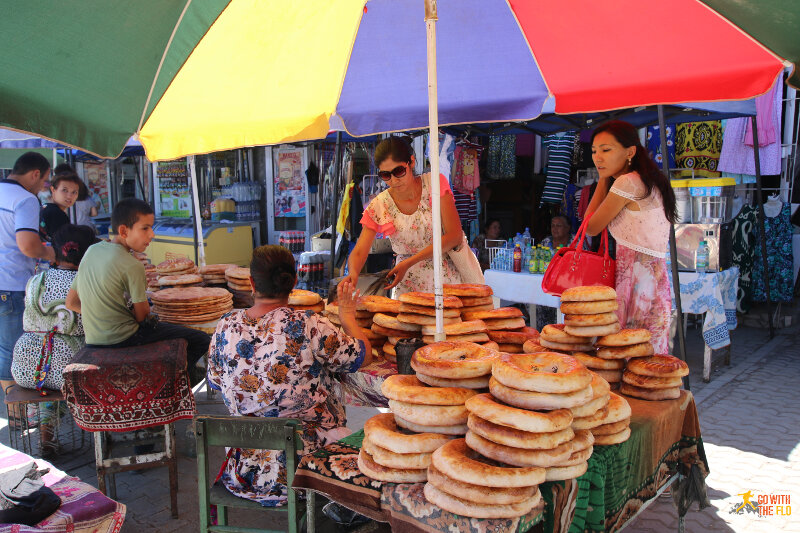
Fresh bread
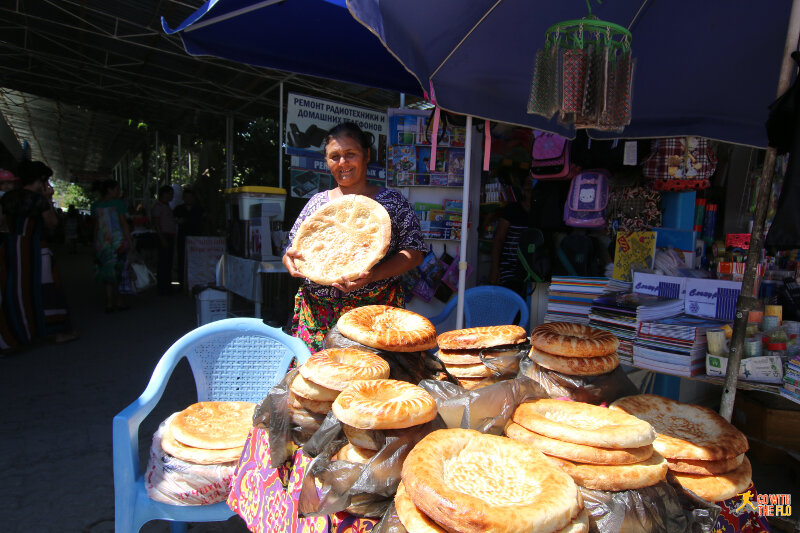
Fresh bread
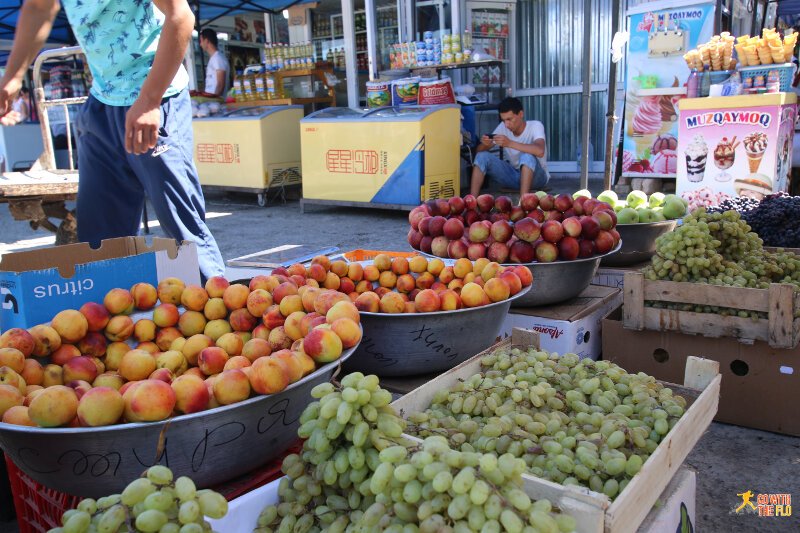
Fruit stall at Kryty Rynok
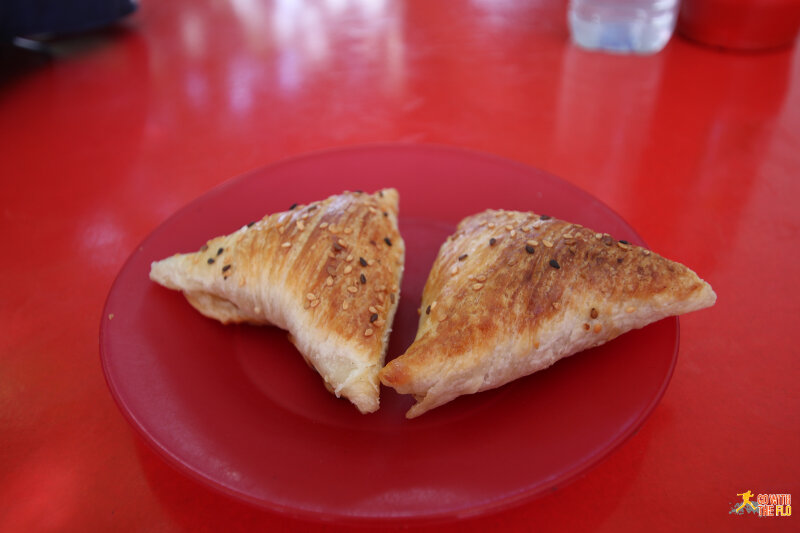
The ubiquitous Uzbekistani snack: Somsa (baked meat buns)
With that a long and exhausting day (it was around 36°) ended but I have to say, Bukhara is well worth a visit. The sights are nothing short of breathtaking and the number of tourists was very low. In many medressas you were all by yourself (save for some souvenir stalls which seem to be everywhere). Compared to Khiva, Bukhara felt more lively and of course is much bigger. I really liked both places.

